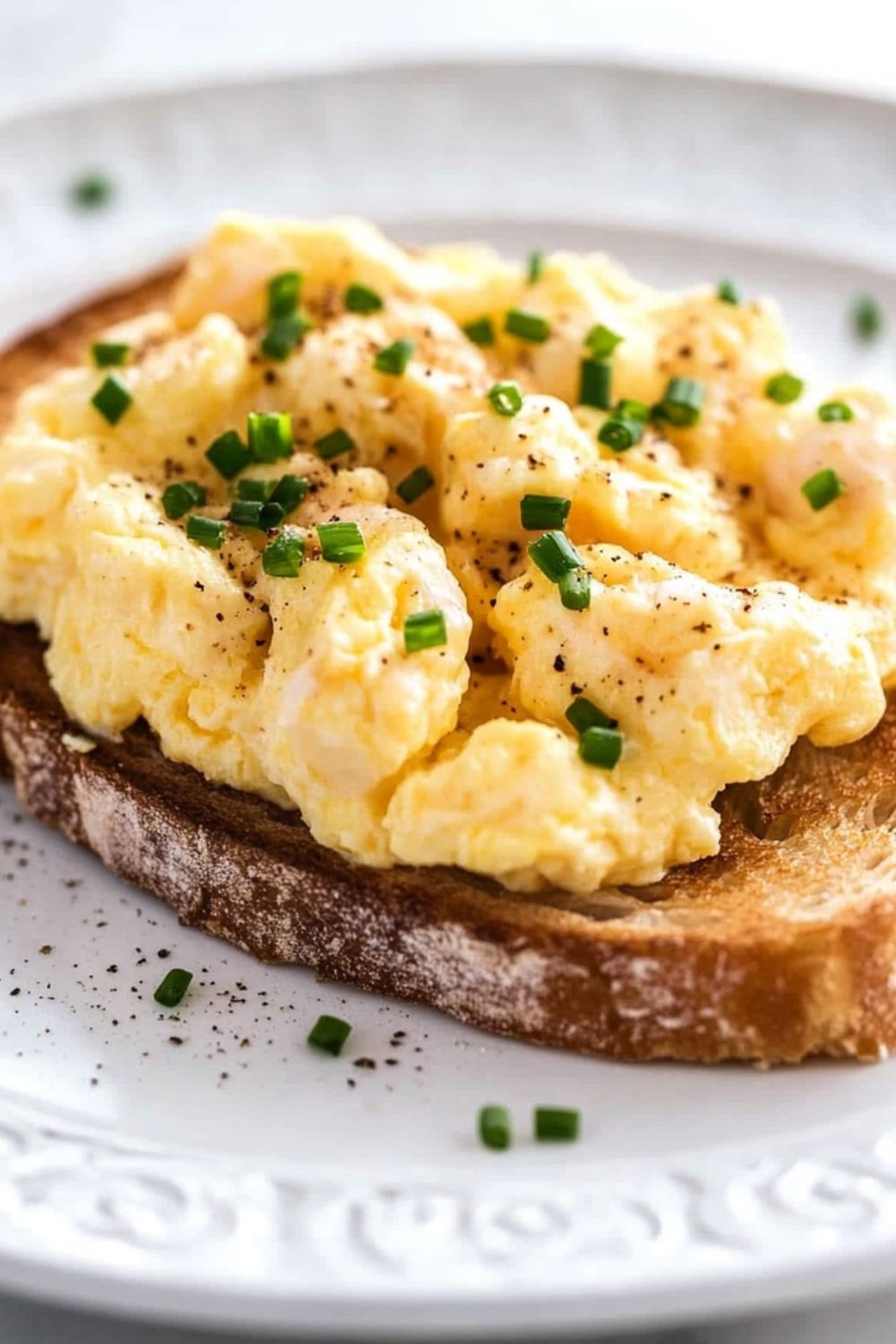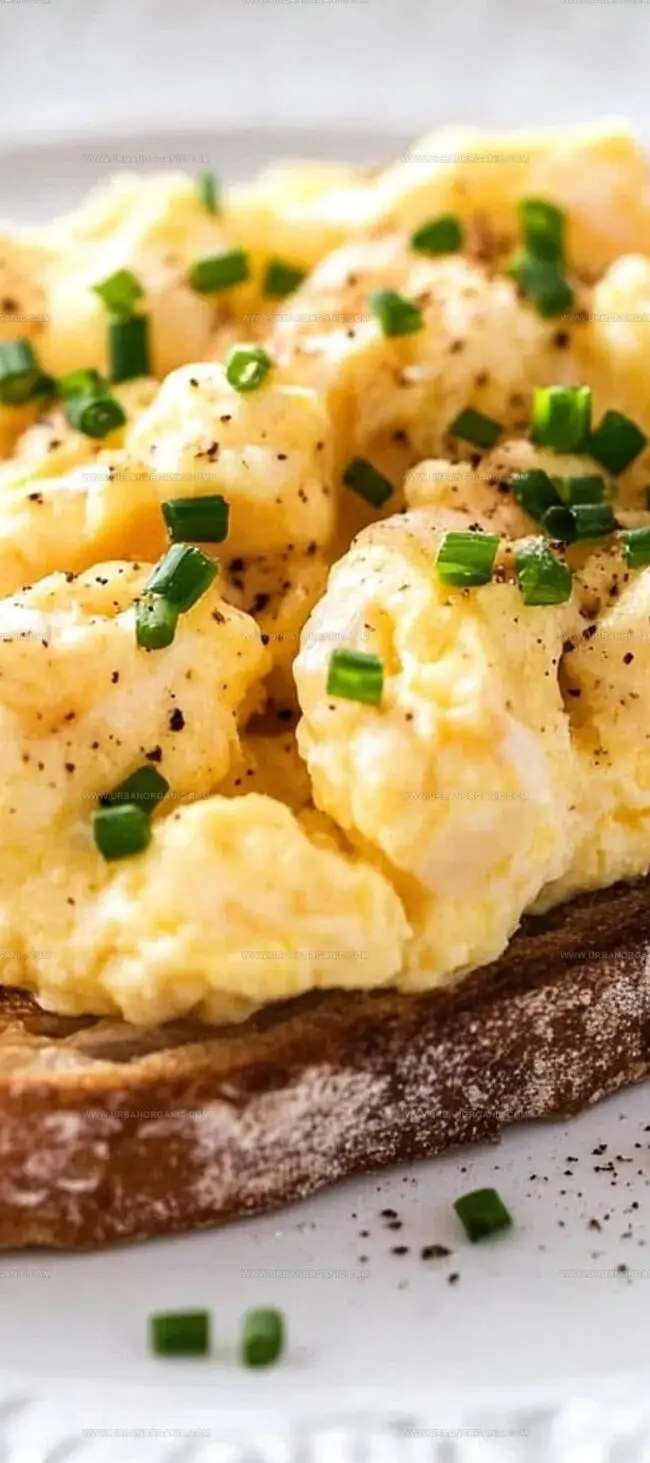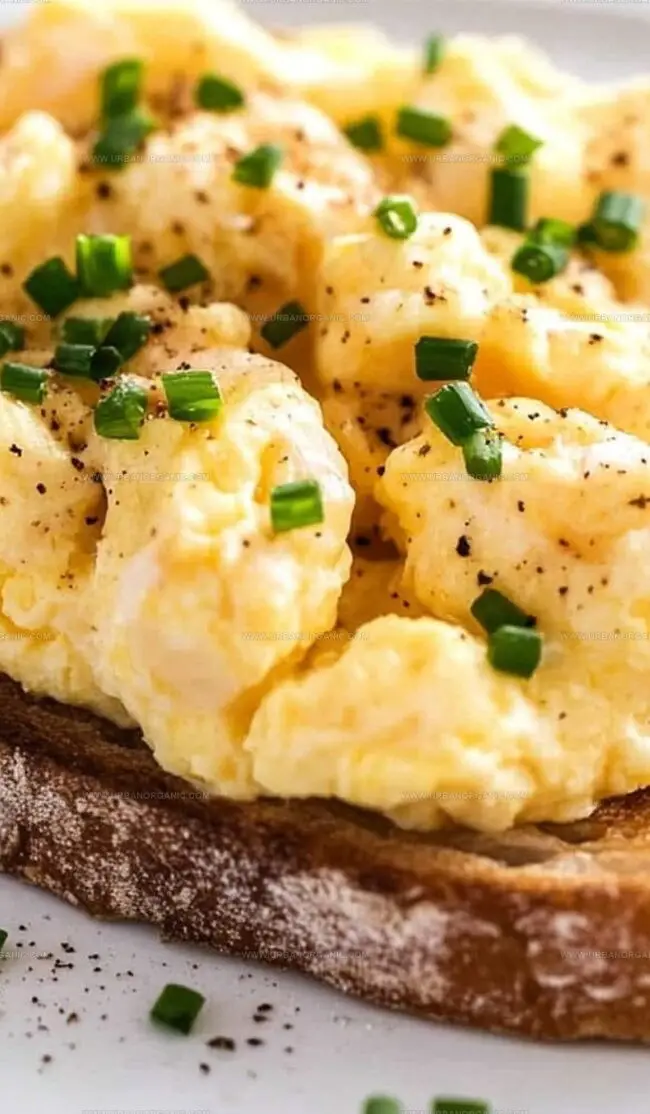Silky Julia Child Scrambled Eggs Recipe for Breakfast Fans
Scrambled eggs by julia child are a breakfast revelation that transcends ordinary morning fare.
These golden, cloud-like delicacies emerge from a culinary dance of gentle heat and precise technique.
Whisked with passion and finesse, each egg transforms into a velvety canvas of flavor and texture.
The magic happens when butter meets eggs in a choreographed ballet of cooking mastery.
Rich, creamy, and impossibly soft, these scrambled eggs redefine what breakfast can be.
Professional and home cooks alike bow to the simplicity and sophistication of this classic technique.
One forkful will transport you to a world of gastronomic bliss, making every breakfast feel like a gourmet celebration.
Quick Recipe Overview
Julia Child Scrambled Eggs Ingredient List
For Dairy Base:For Protein Foundation:For Finishing Garnish:Pan and Whisk for Soft Eggs
Cooking Creamy Scrambled Eggs Julia’s Way
Place a non-stick skillet on medium-low heat. Melt butter until it bubbles and turns slightly foamy, creating a golden base for your eggs.
Crack eggs into a bowl and whisk thoroughly until they’re smooth and uniform in color. Let the mixture rest briefly to enhance the flavor profile.
Pour eggs into the buttered pan. Use a silicone spatula to create gentle circular motions, stirring continuously. Watch as tiny soft curds begin to form and dance across the surface.
Transition to long, sweeping spatula movements across the entire pan. Allow larger, luxurious egg curds to develop, creating a velvety texture that promises a delightful breakfast experience.
Remove the skillet from heat when eggs appear softly set with a moist, creamy appearance. Give a final gentle stir, then transfer immediately to a warm plate. Sprinkle with a pinch of salt, a twist of black pepper, and optional fresh herbs to elevate the dish. Savor your perfectly crafted scrambled eggs while they’re hot and inviting.
Butter and Texture Control Tips
How to Serve Eggs Silky and Simple
Quick Storage Tips for Leftover Scrambles
Print
Silky Julia Child Scrambled Eggs Recipe
- Total Time: 6 minutes
- Yield: 2 1x
Description
Julia Child’s scrambled eggs blend French culinary precision with buttery richness. Creamy eggs emerge from careful whisking and gentle heat, promising restaurant-quality breakfast magic for home cooks.
Ingredients
- 4 eggs (large)
- ½ tbsps (7.5 mL) unsalted butter or olive oil
- 1/8 tsp (0.6 g) kosher salt (or more to taste)
Instructions
- Butter Preparation: Warm a medium non-stick pan over medium-low heat, gently melting butter until it bubbles and foams delicately.
- Egg Mixture: Whisk eggs with salt in a mixing bowl until thoroughly blended and slightly aerated, allowing the mixture to rest for 5-10 minutes to achieve uniform consistency.
- Cooking Technique: Pour whisked eggs into the butter-coated pan, immediately engaging a silicone spatula with continuous, circular motions to create small, tender curds.
- Texture Development: Transition to broader, sweeping spatula movements, developing larger, creamy curds while maintaining constant gentle agitation across the pan’s surface.
- Final Cooking: Remove pan from heat when eggs reach a soft, slightly runny texture with distinct yet tender curds, allowing residual heat to complete the cooking process.
- Finishing Touch: Perform a final gentle stirring motion to distribute heat evenly, then transfer to serving plates and garnish with salt, freshly ground black pepper, and optional chopped herbs for enhanced flavor and visual appeal.
Notes
- Optimize Butter Heating: Use medium-low heat to create a gentle bubbling butter base, which prevents burning and ensures a smooth, even coating for egg cooking.
- Rest Eggs for Perfection: Allow whisked eggs to sit 5-10 minutes before cooking, enabling uniform blending and creating a more consistent, silky texture.
- Master Continuous Motion: Keep spatula moving constantly during cooking to develop delicate, creamy curds without overcooking or creating dry, rubbery eggs.
- Remove Promptly for Creamy Finish: Take pan off heat when eggs are soft and slightly runny, letting residual heat complete cooking for a luxuriously tender result.
- Prep Time: 5 minutes
- Cook Time: 1 minute
- Category: Breakfast, Snacks
- Method: Sautéing
- Cuisine: American
Nutrition
- Serving Size: 2
- Calories: 320
- Sugar: 1 g
- Sodium: 120 mg
- Fat: 26 g
- Saturated Fat: 10 g
- Unsaturated Fat: 16 g
- Trans Fat: 0 g
- Carbohydrates: 2 g
- Fiber: 0 g
- Protein: 24 g
- Cholesterol: 740 mg






Michael Thompson
Founder & Culinary Director
Expertise
Classical & Contemporary Cooking Techniques, Global Cuisine Appreciation, Nutrition & Menu Engineering, Sustainable Cooking Practices, Farm-to-Table Cuisine
Education
Southwestern Oregon Community College
Michael grew up in Oregon, where he learned early that food tastes better when it’s fresh, local, and made with care.
After earning his degree from the Southwestern Oregon Community College, he focused his career on teaching others how to cook with the seasons, reduce food waste, and reconnect with what’s on their plate.
Michael keeps his cooking simple, sustainable, and full of flavor. His favorite part of the process? Watching people realize how easy and satisfying it can be to cook a single great meal from scratch.